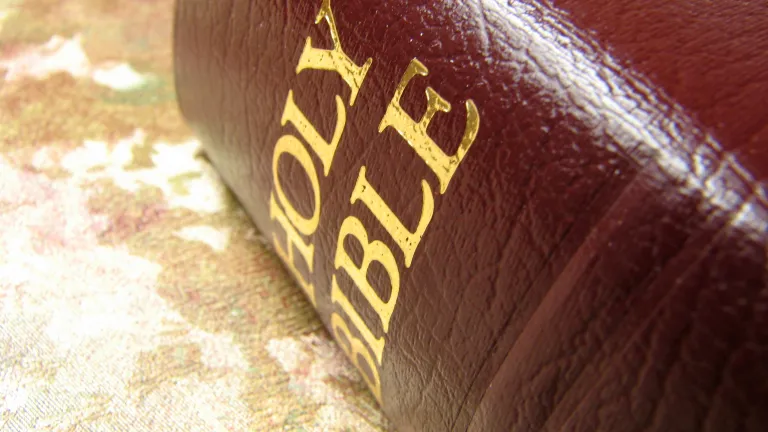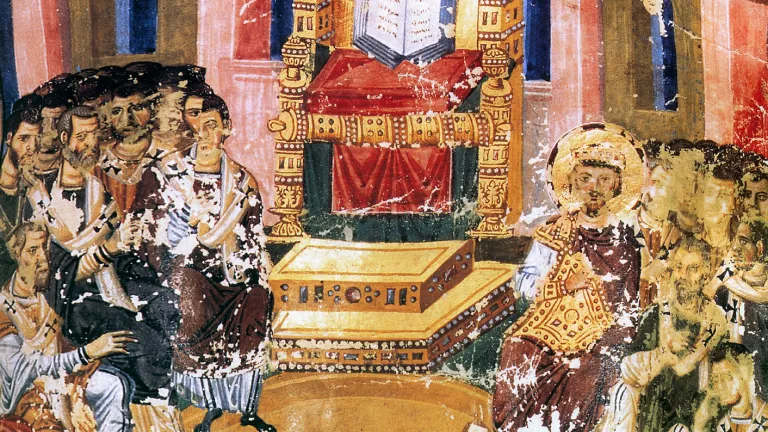A Spurious Reference to the Trinity Added in 1 John 5 verses 7-8

Some Bible translators of past centuries were so zealous to find support for their belief in the Trinity in the Scriptures that they literally added it. A case in point is 1 John 5:7-8.
It reads in the King James Version, also known as the Authorized Version: "For there are three that bear record in heaven, the Father, the Word, and the Holy Ghost: and these three are one. And there are three that bear witness in earth, the Spirit, and the water, and the blood: and these three agree in one." The words in italics are simply not a part of the generally accepted New Testament manuscripts. Regrettably, in this particular passage some other versions read essentially the same.
Most Bible commentaries that mention this addition tell us that it is a spurious comment added to the biblical text. Consider the words of The New Bible Commentary: Revised: "Notice that AV [the Authorized Version] includes additional material at this point. But the words are clearly a gloss [an added note] and are rightly excluded by RSV [the Revised Standard Version] even from its margins" (1970, p. 1269).
In the New Revised Standard Version, 1 John 5:7-8 correctly and more concisely reads, "There are three that testify: the Spirit and the water and the blood, and these three agree." John personifies the three elements here as providing testimony, just as Solomon personified wisdom in the book of Proverbs.
Many other more recent Bible versions likewise recognize the spurious added text and omit it, including the New International Version, American Standard Version and New American Standard Bible, English Standard Version, New English Bible and Revised English Bible, New American Bible, Jerusalem Bible and New Jerusalem Bible, Good News Bible, New Living Translation, Holman Christian Standard Bible, Bible in Basic English and the Twentieth Century New Testament.
"The textual evidence is against 1 John 5:7," explains Dr. Neil Lightfoot, a New Testament professor. "Of all the Greek manuscripts, only two contain it. These two manuscripts are of very late dates, one from the fourteenth or fifteenth century and the other from the sixteenth century. Two other manuscripts have this verse written in the margin. All four manuscripts show that this verse was apparently translated from a late form of the Latin Vulgate" (How We Got the Bible, 2003, pp. 100-101).
The Expositor's Bible Commentary also dismisses the King James and New King James Versions' additions in 1 John 5:7-8 as "obviously a late gloss with no merit" (Glenn Barker, Vol. 12, 1981, p. 353).
Peake's Commentary on the Bible is very incisive in its comments as well: "The famous interpolation after 'three witnesses' is not printed in RSV and rightly [so] . . . No respectable Greek [manuscript] contains it. Appearing first in a late 4th century Latin text, it entered the Vulgate [the 5th-century Latin version, which became the common medieval translation] and finally NT [New Testament] of Erasmus [who produced newly collated Greek texts and a new Latin version in the 16th century]" (p. 1038).
The Big Book of Bible Difficulties tells us: "This verse has virtually no support among the early Greek manuscripts . . . Its appearance in late Greek manuscripts is based on the fact that Erasmus was placed under ecclesiastical pressure to include it in his Greek NT of 1522, having omitted it in his two earlier editions of 1516 and 1519 because he could not find any Greek manuscripts which contained it" (Norman Geisler and Thomas Howe, 2008, pp. 540-541).
Theology professors Anthony and Richard Hanson, in their book Reasonable Belief: A Survey of the Christian Faith, explain the unwarranted addition to the text this way: "It was added by some enterprising person or persons in the ancient Church who felt that the New Testament was sadly deficient in direct witness to the kind of doctrine of the Trinity which he favoured and who determined to remedy that defect . . . It is a waste of time to attempt to read Trinitarian doctrine directly off the pages of the New Testament" (1980, p. 171).
Still, even the added wording does not by itself proclaim the Trinity doctrine. The addition, illegitimate though it is, merely presents Father, Word and Holy Spirit as witnesses. This says nothing about the personhood of all three since verse 7 shows inanimate water and blood serving as such.
Again, the word Trinity did not come into common use as a religious term until after the Council of Nicaea in A.D. 325, several centuries after the last books of the New Testament were complete. It is not a biblical concept.







